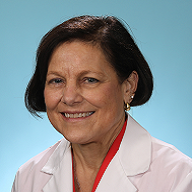Neuromuscular blockade is used in conjunction with anesthetic and analgesic medications for many surgical procedures. Complete reversal of neuromuscular blockade and associated muscle paralysis is needed after conclusion of the procedure before the patient awakens. Part 1 of this two-part e-newsletter focuses on the need for monitoring neuromuscular blockade and reversal in surgical patients and the different types of available monitoring equipment. Part 2 addresses barriers to monitoring and the need for improved communication among the perioperative team at transitions of care. A framework to guide successful implementation of quality improvement interventions is discussed.
Target Audience
This activity was planned to meet the educational needs of pharmacists, physicians, physician assistants, and nurse practitioners involved in anesthesia and perioperative care within hospitals and health systems.
Reviewers and Disclosures
The assistance of the planners and reviewers of this educational activity is gratefully acknowledged.
In accordance with ACCME and ACPE Standards for Commercial Support, ASHP policy requires that all faculty, planners, reviewers, staff, and others in a position to control the content of this activity disclose their financial relationships. In this activity, only the individuals below have disclosed a relevant financial relationship. No other persons associated with this presentation have disclosed any relevant financial relationships.
Bernadette Henrichs, Ph.D., CRNA, CCRN
- Merck: Speakers bureau
- Fresenius Kabi USA, LLC: Advisory board
Satya Krishna Ramachandran, M.D.
- Fresenius Kabi USA, LLC: Advisory board
Rachel C. Wolfe, Pharm.D., BCCCP
- Fresenius Kabi USA, LLC: Advisory board
Susan R. Dombrowski, M.S., B.S.Pharm., Writer
- No relationships pertinent to this activity.
Carla J. Brink, B.S.Pharm., M.S., CHCP, Staff
- No relationships pertinent to this activity.
Initiative Faculty

Bernadette Henrichs, Ph.D., CRNA, CCRN
Director, Nurse Anesthesia Program
Barnes-Jewish College Goldfarb School of Nursing
Director, CRNA Education and Research
Washington University Department of Anesthesiology
St. Louis, Missouri

Satya Krishna Ramachandran, M.D.
Associate Professor of Anaesthesia
Harvard Medical School
Vice Chair of Quality, Safety, and Innovation
Beth Israel Deaconess Medical Center
Boston, Massachusetts

Rachel C. Wolfe, Pharm.D., BCCCP
Clinical Pharmacy Specialist
Perioperative Services and Surgical Critical Care
Barnes-Jewish Hospital
St. Louis, Missouri
Learning Objectives
At the conclusion of this knowledge-based activity, participants should be able to
- Compare the advantages and disadvantages of qualitative and quantitative electronic devices for monitoring neuromuscular blockade and reversal.
- Develop an intervention plan for monitoring neuromuscular blockade and reversal in surgical patients that includes communication among the perioperative team at transitions of care.
CPE Information
 The American Society of Health-System Pharmacists is accredited by the Accreditation Council for Pharmacy Education as a provider of continuing pharmacy education.
The American Society of Health-System Pharmacists is accredited by the Accreditation Council for Pharmacy Education as a provider of continuing pharmacy education.
ACPE #: 0204-0000-19-409-H01-P
Release Date: March 15, 2019
Expiration Date: March 31, 2020
CE Credits: 0.5 hours
Activity Type: Knowledge-based
Activity Fee: Free of charge
Continuing Medical Education
 The American Society of Health-System Pharmacists is accredited by the Accreditation Council for Continuing Medical Education to provide continuing medical education for physicians.
The American Society of Health-System Pharmacists is accredited by the Accreditation Council for Continuing Medical Education to provide continuing medical education for physicians.
The American Society of Health-System Pharmacists designates this enduring material for a maximum of 0.5 AMA PRA Category 1 Credits™. Physicians should claim only the credit commensurate with the extent of their participation in the activity.
Format
This online activity consists of two parts, interactive questions, and evaluation. View the system requirements.
Claim CE Within 60 Days
To receive CE credit, complete the steps below within 60 days of completing the activity.
- Read both Part 1 and Part 2 and answer all polling questions.
- Click "Complete Activity" at the end of Part 2 and complete the evaluation.
- Verify credit was successfully transferred to CPE Monitor before the ACPE 60-day deadline by checking your NABP eProfile account. After the 60-day deadline, ASHP will no longer be able to report credit.
Faculty Biography
 Bernadette Henrichs, Ph.D., CRNA, CCRN
Bernadette Henrichs, Ph.D., CRNA, CCRNDirector, Nurse Anesthesia Program
Barnes-Jewish College Goldfarb School of Nursing
Director, CRNA Education and Research
Washington University Department of Anesthesiology
St. Louis, Missouri
Bernadette Henrichs, Ph.D., CRNA, CCRN, is Professor and Director of the Nurse Anesthesia Program at the Goldfarb School of Nursing at Barnes-Jewish College in St. Louis, Missouri. This program is accredited by the International Federation of Nurse Anesthetists, the second in the U. S. and fourth in the world to receive this honor. She is also Director of CRNA Education and Research in the Department of Anesthesiology at Washington University School of Medicine in St. Louis. Along with her teaching and administrative roles, Dr. Henrichs administers anesthesia several days a week.
Dr. Henrichs received her anesthesia training from Washington University School of Medicine, later earning her M.S.N. and Ph.D. degrees from St. Louis University in St. Louis, Missouri. Her doctoral research was on the use of simulation for education, and she has published several articles on this topic.
Dr. Henrichs is an active member of the Missouri Association of Nurse Anesthetists (MoANA), American Association of Nurse Anesthetists (AANA), American Association of Critical-Care Nurses (AACN), Sigma Theta Tau International Honor Society of Nursing, and Society for Simulation in Healthcare. She has served in a variety of roles for MoANA, including Treasurer, Region Director, Vice-President, and Chair of the Continuing Education Committee. She also served on the AANA Board of Directors as Region 4 Director and on the AANA Foundation Board of Trustees.
In addition to authoring several articles and book chapters on anesthesia-related topics, Dr. Henrichs co-edited A Resource for Nurse Anesthesia Educators, 2nd ed. She served on the editorial board and is a reviewer for AANA Journal. In 2017, Dr. Henrichs received the AANA Program Director of the Year Award. She also received the Beverly Krause Outstanding CRNA Clinical Instructor Award in 2014, an honor bestowed by graduates.
Faculty Biography
 Satya Krishna Ramachandran, M.D.
Satya Krishna Ramachandran, M.D.Associate Professor of Anaesthesia
Harvard Medical School
Vice Chair of Quality, Safety, and Innovation
Beth Israel Deaconess Medical Center
Boston, Massachusetts
S. Krishna Ramachandran, M.D., is Associate Professor of Anaesthesia at Harvard Medical School and Vice Chair of Quality, Safety, and Innovation in the Department of Anesthesiology at Beth Israel Deaconess Medical Center in Boston.
Dr. Ramachandran is a nationally recognized leader in patient safety and perioperative quality. In his current role as the Vice-Chair of Anesthesiology, he has developed several programs, including a unique quality tool that connects clinician medication management behaviors with patient and efficiency outcomes. He also led anesthesia clinical change management and surveillance of safety in response to the shortage of intravenous opioids. Through this work, his group has developed very detailed measures of clinical behaviors and outcomes.
Dr. Ramachandran began his career in anesthesia in Pondicherry, India, and developed it further as a specialist registrar in the Oxford Deanery in England. After a successful decade leading quality and safety initiatives at the University of Michigan, he moved to Harvard and Beth Israel Deaconess Medical Center in 2016. He is Program Director for the International Postgraduate Anesthesia Fellowship in Perioperative Quality and Safety and a faculty member on the Master of HealthCare Quality and Safety program at Harvard Medical School. In addition, he is a busy clinician, educator, and researcher.
Dr. Ramachandran serves on the editorial board of prestigious journals and has published over 60 peer-reviewed studies in top anesthesiology journals, primarily around perioperative cardiorespiratory outcomes. Most recently he co-authored a study looking at the relationship between reducing neostigmine syringe size to 3 mL from the standard 5-mL vial and perioperative respiratory failure rates.
Faculty Biography
 Rachel C. Wolfe, Pharm.D., BCCCP
Rachel C. Wolfe, Pharm.D., BCCCPClinical Pharmacy Specialist
Perioperative Services and Surgical Critical Care
Barnes-Jewish Hospital
St. Louis, Missouri
Rachel C. Wolfe, Pharm.D., BCCCP, is Clinical Pharmacy Specialist of Perioperative Services and Surgical Critical Care at Barnes-Jewish Hospital and Washington University Medical Center in St. Louis, Missouri. She is also Adjunct Clinical Instructor for the Barnes-Jewish Hospital Goldfarb School of Nursing and St. Louis College of Pharmacy.
Dr. Wolfe earned her Doctor of Pharmacy degree from St. Louis College of Pharmacy. She completed her residency training at University of Kentucky HealthCare, where she specialized and remains board certified in critical care. Dr. Wolfe is experienced in providing clinical pharmacy services across the continuum of perioperative care, in addition to the surgical, burn, and trauma intensive care units. She has also been involved in independent community pharmacy management.
At Barnes-Jewish Hospital, Dr. Wolfe is responsible for the provision of clinical pharmacy services in the perioperative and periprocedural environment and for the coordination of clinical services provided by four operating room pharmacy satellites. She also serves as a preceptor for Doctor of Pharmacy students and pharmacy residents and is co-chair of the Enhanced Surgical Recovery Pharmacy & Documentation committee and the analgesia subcommittee of the Pharmacy & Therapeutics committee.
Dr. Wolfe collaborates closely with the Department of Anesthesiology to develop and implement evidenced-based protocols and plays an integral role in the enhanced surgical recovery initiatives that span across several surgical services. She actively participates in clinical research and quality improvement initiatives within the Departments of Anesthesiology, Perioperative Services, and Pharmacy. She has led several medication safety and standardization initiatives in addition to initiatives that focus on quality of perioperative care and postoperative patient outcomes.
Dr. Wolfe is a member of the Society of Critical Care Medicine and American College of Clinical Pharmacy. In 2011 she received Barnes-Jewish Hospital’s David A. Gee Meritorious Service Award and Team Award for Quality Improvement for Anesthesia Medication Management.
Faculty Biography

Rachel C. Wolfe, Pharm.D., M.H.A., BCCCP, Initiative Chair
Clinical Pharmacy Specialist
Perioperative and Surgical Critical Care
Barnes-Jewish Hospital
St. Louis, Missouri
Rachel C. Wolfe, Pharm.D., M.H.A., BCCCP, is Clinical Pharmacy Specialist of Perioperative and Surgical Critical Care at Barnes-Jewish Hospital and Washington University Medical Center in St. Louis, Missouri. She is also Adjunct Clinical Instructor for the Barnes-Jewish Hospital Goldfarb School of Nursing and St. Louis College of Pharmacy. , Dr. Wolfe is responsible for the provision of clinical pharmacy services in the perioperative and periprocedural environment and for the coordination of clinical services provided by four operating room pharmacy satellites. She also serves as a preceptor for Doctor of Pharmacy students and pharmacy residents and is co-chair of the Enhanced Surgical Recovery Pharmacy & Documentation committee and the Analgesia subcommittee of the Pharmacy & Therapeutics committee.
Dr. Wolfe earned her Doctor of Pharmacy degree from St. Louis College of Pharmacy and Master of Health Administration degree from Webster University, also in St. Louis. She completed her residency training at University of Kentucky HealthCare, and she is board certified in critical care.
Dr. Wolfe is a member of the American College of Clinical Pharmacy, American Society of Enhanced Recovery, and Society of Critical Care Medicine. In 2011 she received Barnes-Jewish Hospital’s David A. Gee Meritorious Service Award and Team Award for Quality Improvement for Anesthesia Medication Management.
Faculty Biography

Bernadette Henrichs, PhD, CRNA, CCRN, CHSE, FAANA
Director, Nurse Anesthesia Program
Goldfarb School of Nursing-Barnes Jewish College
Director, CRNA Education and Research
Washington University Department of Anesthesiology
St. Louis, Missouri
Bernadette Henrichs, PhD, CRNA, CCRN, CHSE, FAANA, is Professor and Director of the Nurse Anesthesia and PhD in Nursing Programs at Goldfarb School of Nursing-Barnes-Jewish College. She is Director of CRNA Education and Research in the Anesthesiology Department at Washington University, St. Louis. She received her anesthesia training in 1994 from Washington University and her MSN in 1993 and her PhD in 1999 from St. Louis University. She received the AANA Program Director of the Year in 2017 and was inducted as a Fellow of the AANA in August. She serves on the Drug Diversity Committee for Barnes-Jewish Hospital and is passionate about preventing drug diversion in the hospital.
Faculty Biography

S. Krishna Ramachandran , M.D.
Associate Professor of Anaesthesia
Harvard Medical School
Vice Chair of Quality, Safety, and Innovation
Beth Israel Deaconess Medical Center
Boston, Massachusetts
S. Krishna Ramachandran, M.D., is Associate Professor of Anaesthesia at Harvard Medical School and Vice Chair of Quality, Safety, and Innovation in the Department of Anesthesiology at Beth Israel Deaconess Medical Center in Boston.
Dr. Ramachandran is a nationally recognized leader in patient safety and perioperative quality. In his current role as the Vice-Chair of Anesthesiology, he has developed several programs, including a unique quality tool that connects clinician medication management behaviors with patient and efficiency outcomes. He also led anesthesia clinical change management and surveillance of safety in response to the shortage of intravenous opioids. Through this work, his group has developed very detailed measures of clinical behaviors and outcomes.
Dr. Ramachandran began his career in anesthesia in Pondicherry, India, and developed it further as a specialist registrar in the Oxford Deanery in England. After a successful decade leading quality and safety initiatives at the University of Michigan, he moved to Harvard and Beth Israel Deaconess Medical Center in 2016. He is Program Director for the International Postgraduate Anesthesia Fellowship in Perioperative Quality and Safety and a faculty member on the Master of HealthCare Quality and Safety program at Harvard Medical School. In addition, he is a busy clinician, educator, and researcher.
Dr. Ramachandran serves on the editorial board of prestigious journals and has published over 60 peer-reviewed studies in top anesthesiology journals, primarily around perioperative cardiorespiratory outcomes. Most recently he co-authored a study looking at the relationship between reducing neostigmine syringe size to 3 mL from the standard 5-mL vial and perioperative respiratory failure rates.
